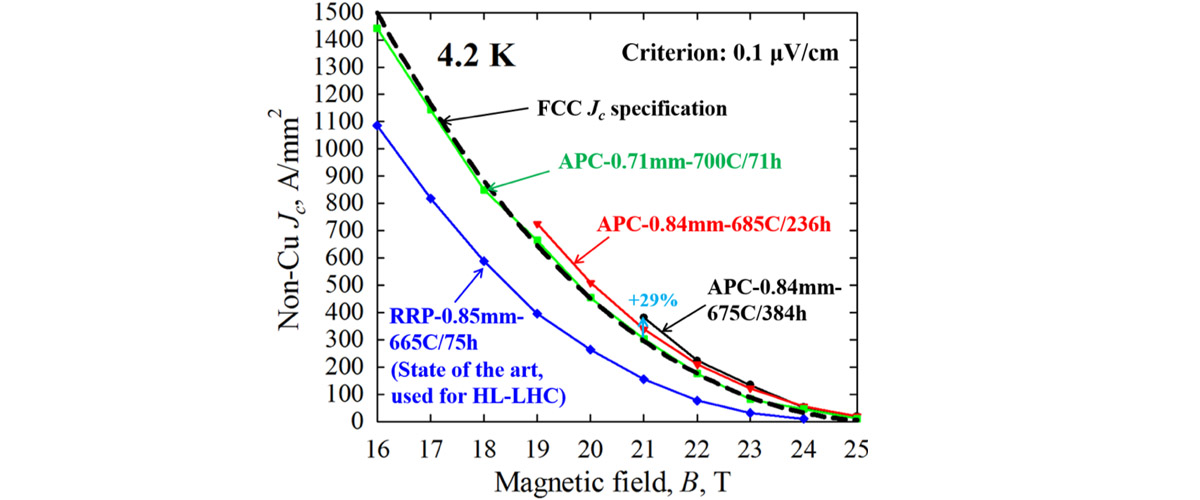These monthly highlights represent the most promising and cutting-edge research underway in the lab’s seven user facilities.

December 12, 2019
Ce3TiSb5 identified as a metallic magnet in which inverse melting does occur.

December 12, 2019
This finding demonstrates a path forward to dramatically enhance sensitivity for molecule concentration measurement by magnetic resonance using Overha…

October 28, 2019
Research on doped SrCu2(BO3)2 shows anomalies in the magnetization.

October 28, 2019
Studies of uranium ditelluride in high magnetic fields show superconductivity switching off at 35 T, but reoccurring at higher magnetic fields between…

September 20, 2019
In Sr3NiIrO6 vibrations in the crystal lattice (phonons) play an important role in its intriguing magnetic properties that result in a very high coerc…

September 20, 2019
Small additions of elemental Hafnium boosts current-carrying capability in Nb3Sn superconductor.

August 19, 2019
Precise determination of hemoglobin sequence and subunit quantitation from human blood for diagnosis of hemoglobin-based diseases.

August 19, 2019
Using intense pulsed magnetic fields and measurements at low temperatures, MagLab users have found evidence of a long-sought “spin liquid” in terbium …

July 29, 2019
Study of helium atoms at low temperatures illuminate extreme quantum effects that were earlier predicted.

July 29, 2019
Very high magnetic fields now enable researchers to understand what surrounds calcium atoms in materials.

June 20, 2019
MagLab users have modified the critical current of Nb3SN, a material that was thought to be fully exploited, and boosted its performance by 50%.
![Scientists studied the copper-based compound [Cu(pyrimidine)H2O4] SiF6 H2O. Repeating units of four copper ions (see above) create corkscrew-like chains with intriguing magnetic properties.](/media/ayslgnyz/june2019_emr_chiral_staggered_chain.jpg)
June 20, 2019
The findings contribute to scientists' understanding of magnetic materials that could point the way to future applications.

May 15, 2019
The observation of topological states coupled with superconductivity represents an opportunity for scientists to manipulate nontrivial superconducting…

May 15, 2019
Three variants of the coral species A cervicornis were found to have unique metabolic signatures that can be distinguished by NMR spectroscopy. Differ…

April 10, 2019
Pulsed magnets are designed to operate near their structural limits to be able to generate extremely high magnetic fields. The coils have a limited li…

April 10, 2019
To increase the rate of particle collisions in the Large Hadron Collider (LHC) at CERN, new powerful magnets will soon be made from Nb3Sn superconduct…

March 20, 2019
With advanced techniques and world-record magnetic fields, researchers have detected new MRI signals from brain tumors.

March 01, 2019
Scientists will be able to apply the technique to characterize similar molecules, helping develop vaccines and drugs to treat bacterial infection.

March 01, 2019
Combining high-field NMR with infrared microscopy, scientists learned more about how gas diffuses in a novel class of molecular sieves that could one …

January 29, 2019
Scientists revealed previously unobserved and unexpected FQH states in monolayer graphene that raise new questions regarding the interaction between e…

January 29, 2019
Insights into the structure and movement of T cell surface proteins could lead to new ways to fight cancers, infections and other diseases.

January 04, 2019
With unprecedented sensitivity and resolution from state-of-the-art magnets, scientists have identified for the first time the cell wall structure of …

January 04, 2019
Area teachers learn how to explain magnet research conducted nearby to their students.
Last modified on 06 August 2024